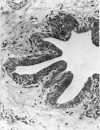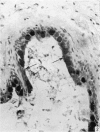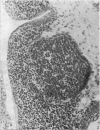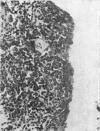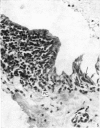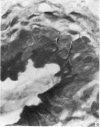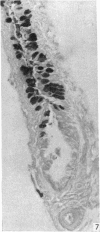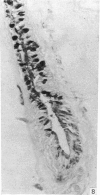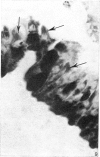Abstract
The secretory ducts of the Harderian and lacrimal glands of the turkey, fowl and duck are similar in both structure and function. The single duct of each gland is lined by mucus-secreting epithelium. The epithelial cells vary from cuboidal to columnar, and goblet cells of three types are found. Type A, the most numerous, contain neutral mucopolysaccharides, type B have mixed acid and sulphated mucosubstances and type C, the least numerous, contain acid mucins. In both ducts glycogen is present in the lumen, but it occurs intracellularly only in the fowl up to seven days after hatching. Lymphocytes, either as diffuse tissue or as germinal centres, are found scattered along the length of the ducts. Some plasma cells and plasmablasts are also present.
Full text
PDF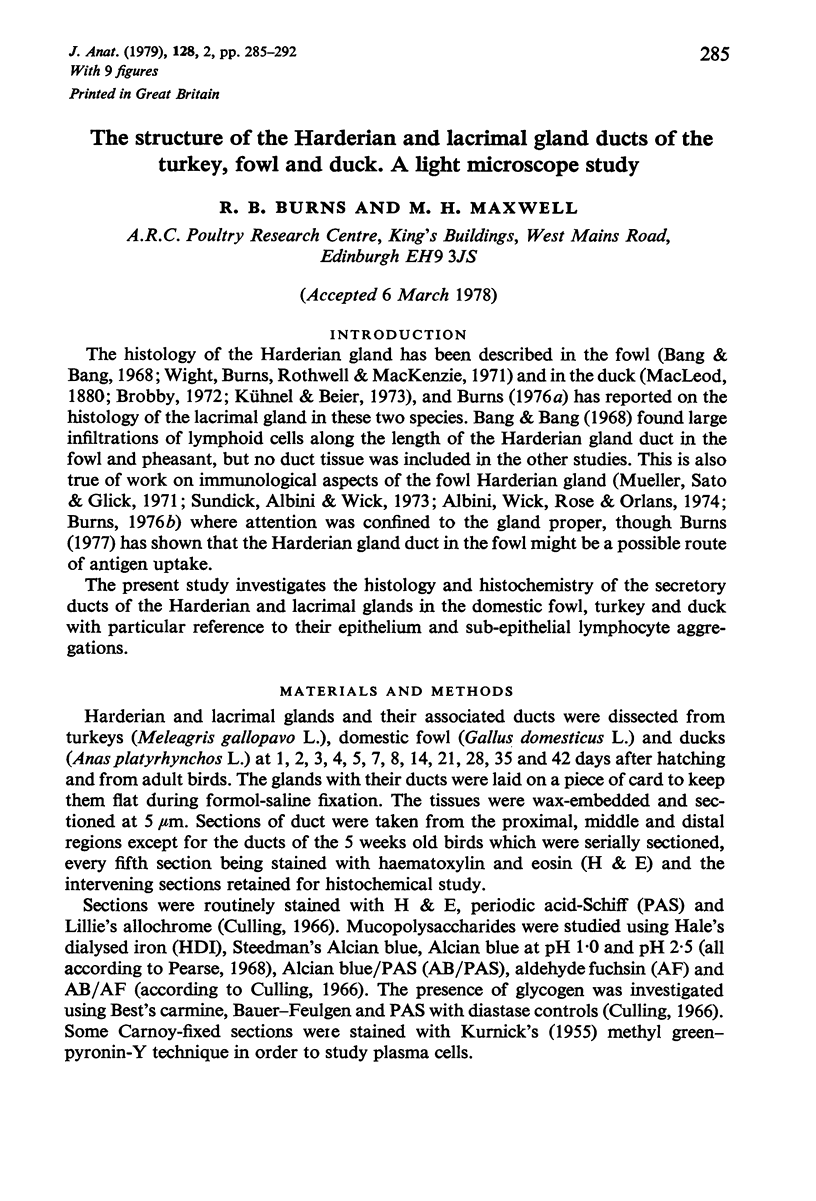
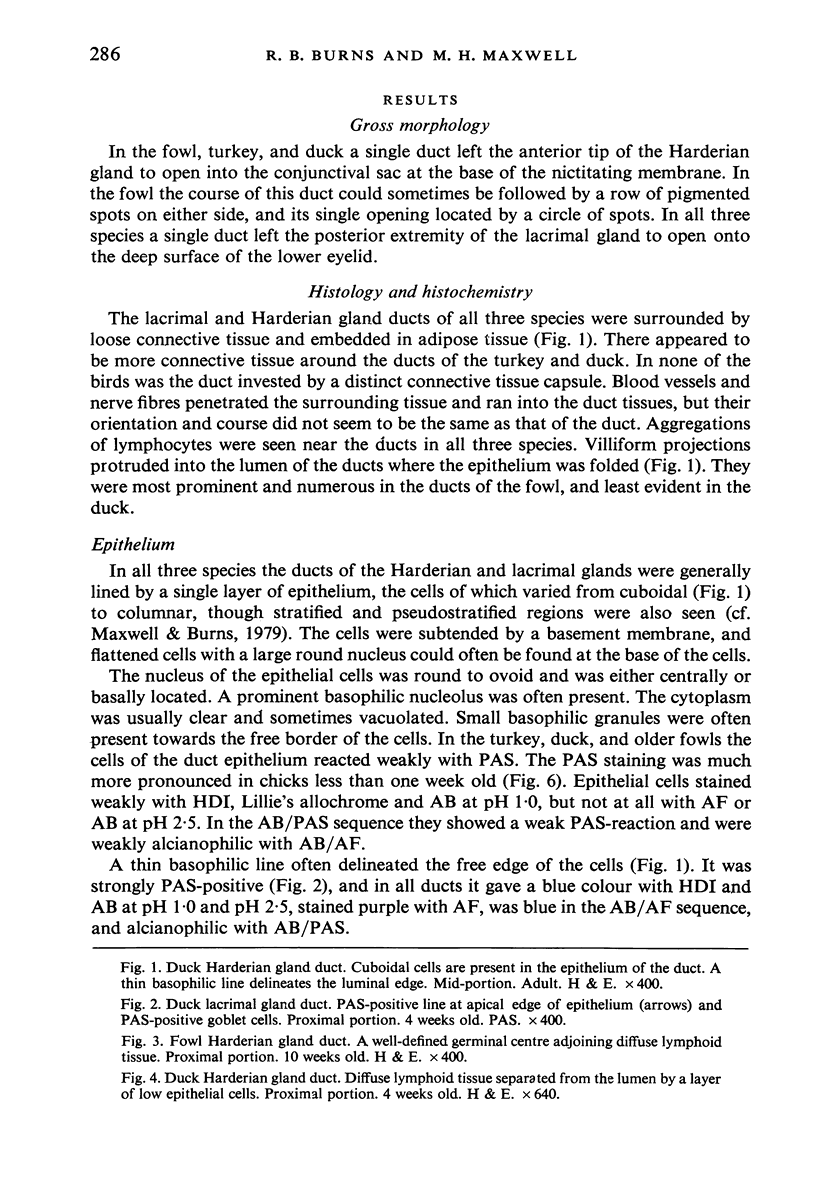
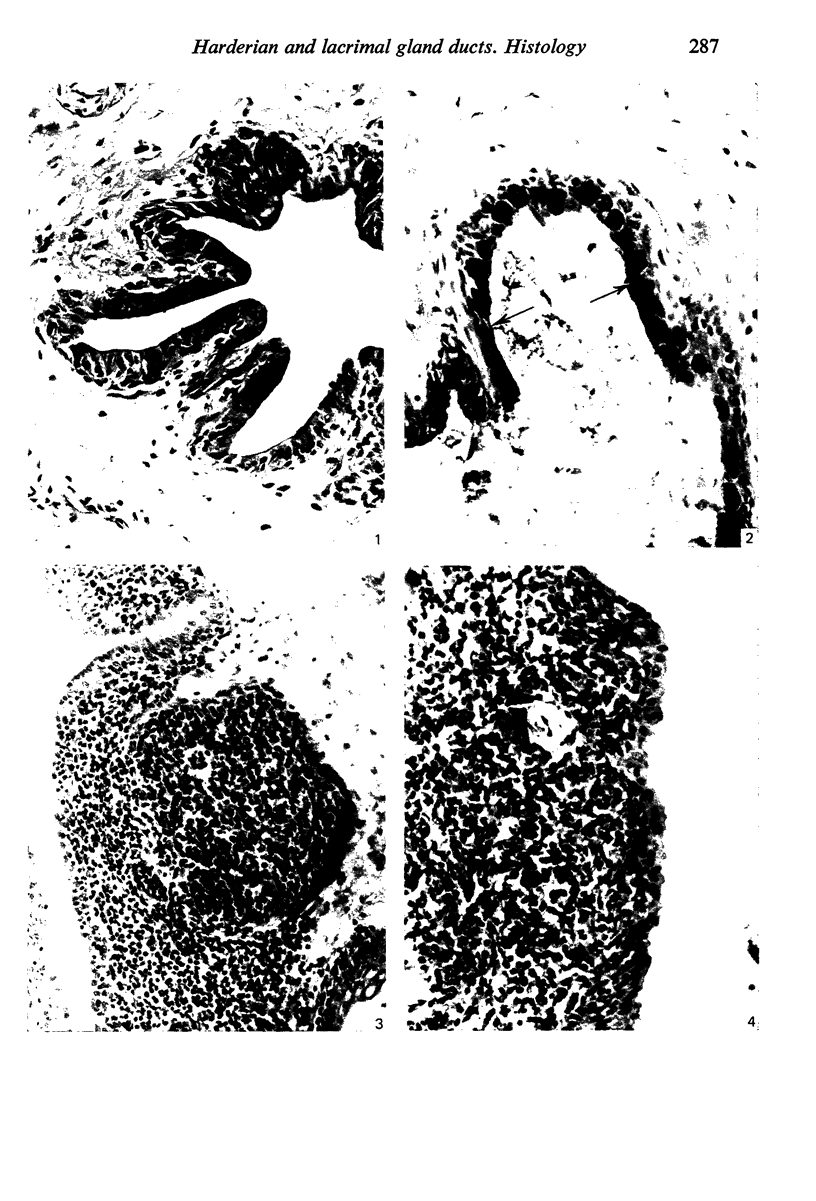
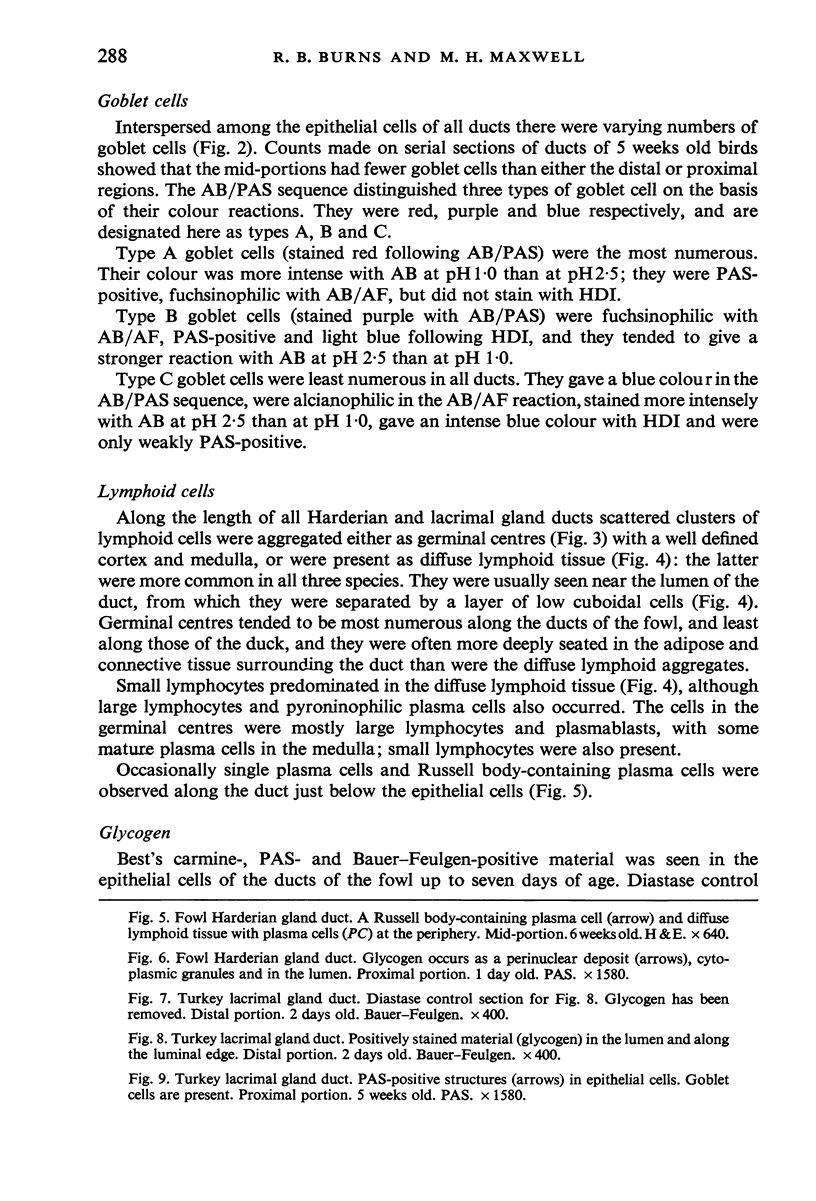
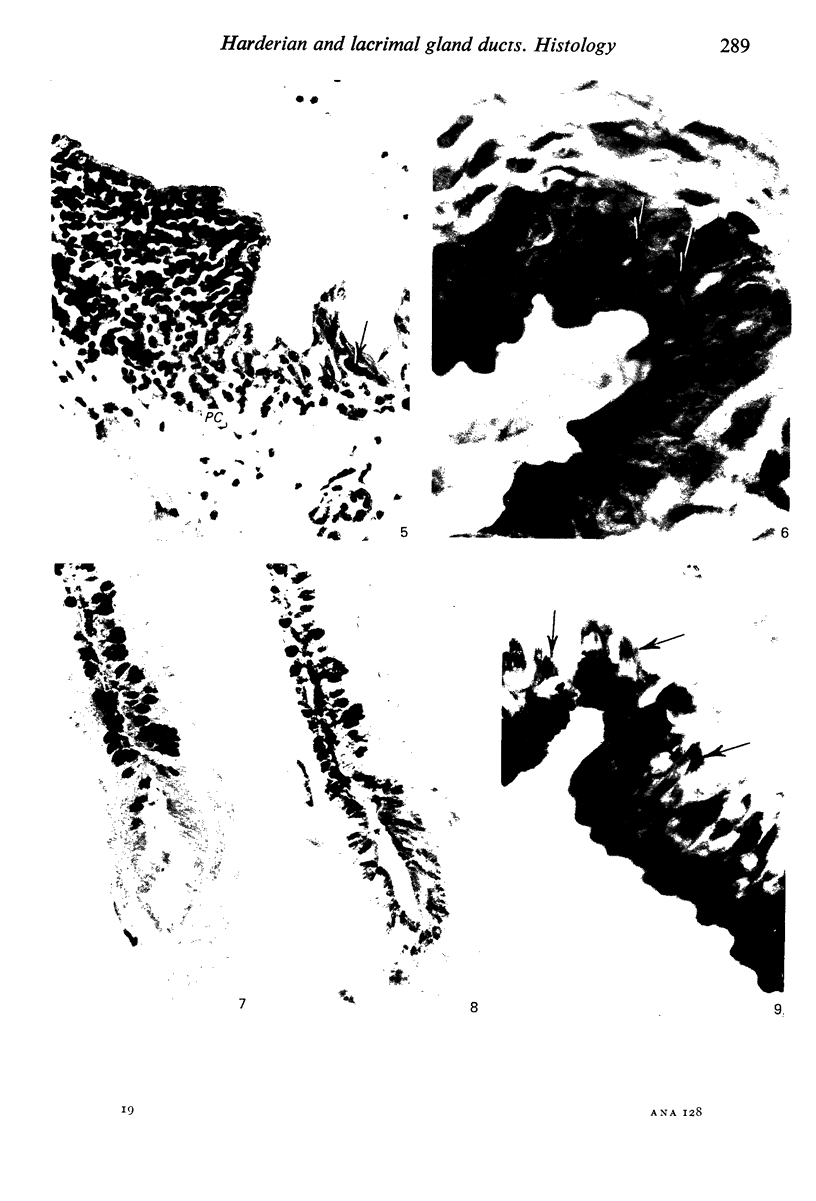
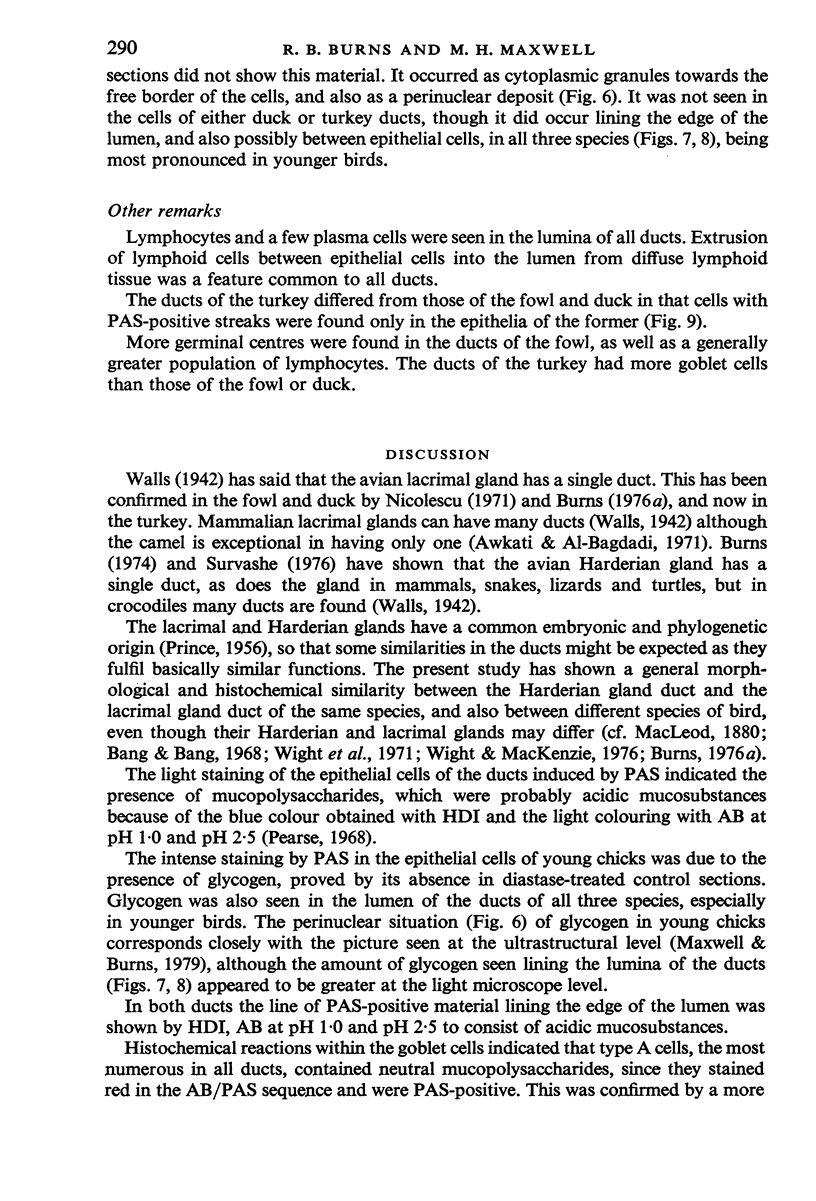
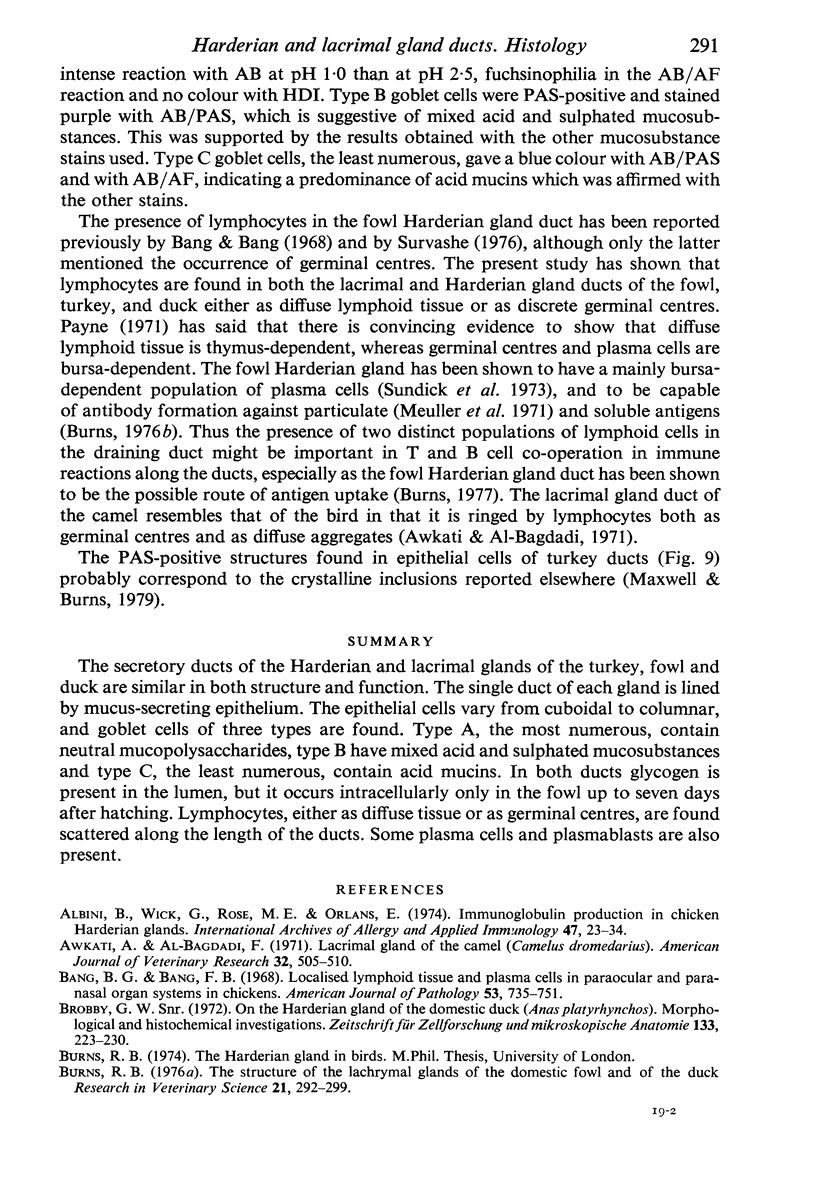

Images in this article
Selected References
These references are in PubMed. This may not be the complete list of references from this article.
- Albini B., Wick G., Rose E., Orlans E. Immunoglobulin production in chicken Harderian glands. Int Arch Allergy Appl Immunol. 1974;47(1):23–34. doi: 10.1159/000231198. [DOI] [PubMed] [Google Scholar]
- Awkati A., al-Bagdadi F. Lacrimal gland of the camel (Camelus dromedarius). Am J Vet Res. 1971 Mar;32(3):505–510. [PubMed] [Google Scholar]
- Bang B. G., Bang F. B. Localized lymphoid tissues and plasma cells in paraocular and paranasal organ systems in chickens. Am J Pathol. 1968 Nov;53(5):735–751. [PMC free article] [PubMed] [Google Scholar]
- Brobby G. W., Sr On the Harderian gland of the domestic duck (Anas platyrhynchus). Morphological and histochemical investigations. Z Zellforsch Mikrosk Anat. 1972;133(2):223–230. doi: 10.1007/BF00307144. [DOI] [PubMed] [Google Scholar]
- Burns R. B. Specific antibody production against a soluble antigen in the Harderian gland of the domestic fowl. Clin Exp Immunol. 1976 Nov;26(2):371–374. [PMC free article] [PubMed] [Google Scholar]
- Burns R. B. The structure of the lachrymal glands of the domestic fowl and of the duck. Res Vet Sci. 1976 Nov;21(3):292–299. [PubMed] [Google Scholar]
- KURNICK N. B. Pyronin Y in the methyl-green-pyronin histological stain. Stain Technol. 1955 Sep;30(5):213–230. doi: 10.3109/10520295509114469. [DOI] [PubMed] [Google Scholar]
- Kühnel W., Beier H. M. Morphologie und Cytochemie der Harderschen Drüse von Anatiden. Z Zellforsch Mikrosk Anat. 1973 Jul 31;141(2):255–283. [PubMed] [Google Scholar]
- Mueller A. P., Sato K., Glick B. The chicken lacrimal gland, gland of Harder, caecal tonsil, and accessory spleens as sources of antibody-producing cells. Cell Immunol. 1971 Apr;2(2):140–152. doi: 10.1016/0008-8749(71)90033-5. [DOI] [PubMed] [Google Scholar]
- Sundick R. S., Albini B., Wick G. Chicken Harder's gland: evidence for a relatively pure bursa-dependent lymphoid cell population. Cell Immunol. 1973 May;7(2):332–335. doi: 10.1016/0008-8749(73)90256-6. [DOI] [PubMed] [Google Scholar]
- Wight P. A., Burns R. B., Rothwell B., Mackenzie G. M. The Harderian gland of the domestic fowl. I. Histology, with reference to the genesis of plasma cells and Russell bodies. J Anat. 1971 Nov;110(Pt 2):307–315. [PMC free article] [PubMed] [Google Scholar]
- Wight P. A., Mackenzie G. M. Mucosubstances in the Harderian gland of the domestic duck. Res Vet Sci. 1974 Jul;17(1):114–121. [PubMed] [Google Scholar]



